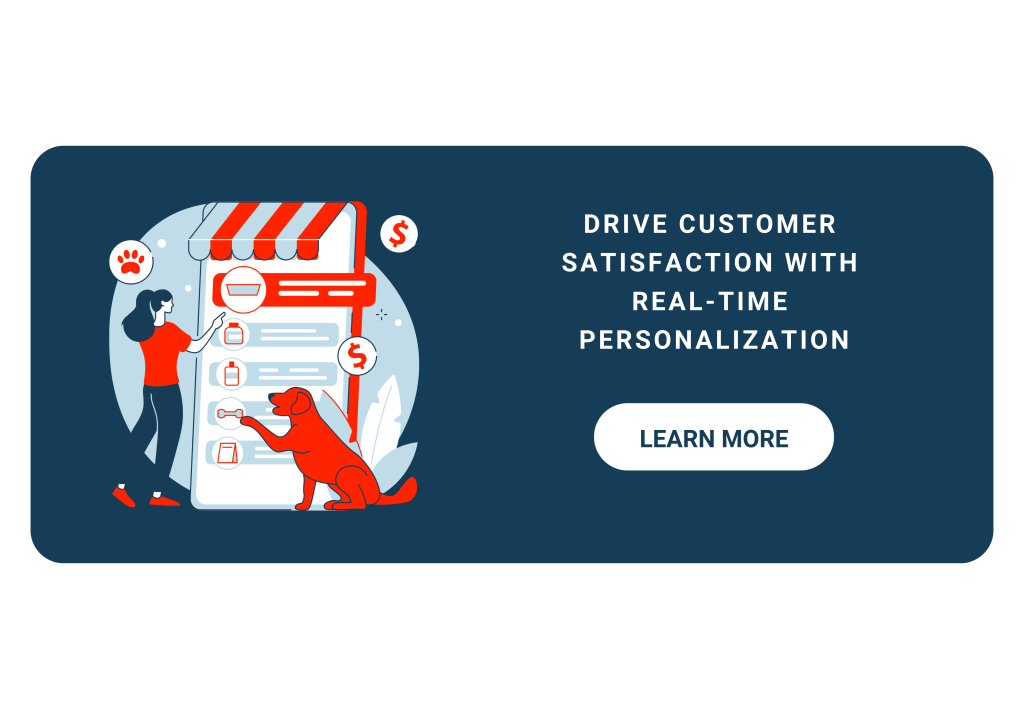Navigating an ecommerce website for the ideal product can be like searching for a needle in a haystack.
I remember all too well that overwhelming feeling during my early online shopping experiences, aimlessly clicking through countless products. When something finally changed…
I was being presented with options that were uncannily relevant to me. It felt as if these platforms could read my mind. What we discovered was the power of AI-driven recommendation engines working tirelessly behind the scenes to recommend the right products at the right time.
The power of AI-driven recommendation systems in ecommerce
AI-driven recommendation systems offer an amazing opportunity to draw in customers, increase revenue, and provide customers with a tailored shopping experience. Using a product recommendation engine isn’t just about driving revenue and increased profits — it’s about improving customer engagement.
Ecommerce businesses that leverage these systems see significant improvements in customer engagement. Customers appreciate when online stores understand their preferences and suggest relevant products accordingly.
A study showed 56% of users return to sites offering recommendations tailored to them, highlighting the role this technology plays in fostering loyalty and repeat business. Helping businesses anticipate needs, creating more opportunities for upselling or cross-selling while making shoppers feel understood at the same time.
Fueling growth through increased sales volume
No one likes wasting time scrolling endlessly only to find irrelevant items. That’s where AI-driven recommendation systems come to the rescue. By recommending products based on user behavior, these smart tools help shoppers find what they want faster.
This improved shopping experience leads to an increase in average order values and a higher conversion rate. More happy customers mean more sales — always good news for any ecommerce business.
A personal touch goes a long way toward enhancing shopping experiences by making them more relevant and engaging for each user. Customers who feel understood through personalized interactions are likely to place larger orders – boosting average order values substantially. Even a ‘mistaken’ recommendation can lead to unexpected discoveries and purchases, further driving sales.
With such striking results, it’s no surprise that personalized recommendations have become the cornerstone of customer retention strategies for ecommerce businesses worldwide. But how do these systems manage to hit the mark so consistently? The secret is in their ability to understand customer behavior
Successful implementation of product recommendation engines
The application of AI-driven recommendation engines in the ecommerce industry has revolutionized customer experience and boosted revenues. Here we have a few instances where these tools have made a significant impact.
Alibaba, one of the world’s largest online commerce companies, is known for its ability to deliver highly effective product recommendations. Using product recommendations to drive conversion rates up by 20%, is a clear testament to the power this tool holds. Generating personalized suggestions that resonated well with their customers’ preferences helped increase revenue and enhanced customer satisfaction – making it a win-win situation for both parties.
This success story emphasizes how businesses can leverage AI-driven recommendation engines to analyze customer data effectively and make smarter decisions. The focus here is on delivering relevant products tailored specifically for each individual based on past interactions – embodying the notion that the “Customer is King.”
Another example worth mentioning comes from Netflix, which provides users with tailor-made content options. With this strategy, around 75% percent of what users watch now comes directly from their recommendations. By digging deeper into browsing habits and the time spent on specific genres, it gets to know its users better over time, allowing for more accurate predictions of what they might enjoy next.
Types of recommendations
Best Sellers and Popular Products: Displaying best-selling or popular items can help shoppers discover what’s trending and what others are buying, thereby increasing sales.
Personalized Cross-Sell Products: Suggesting complementary or related products to what the user is currently considering, like recommending a phone case when a user is looking at a smartphone. This is how Proto AI works, by solving for the individual user Proto AI recommends items that complement what that user is looking at – whether those items are best sellers or not.

Location-Based Recommendations: Tailoring recommendations based on a user’s geographic location, local preferences, or weather conditions can be effective for certain types of products, like clothing or food.
Recently Viewed Items: Showing products recently viewed by the user reminds them of items they were interested in and can be an effective way to re-engage the user.
Remember, these engines are here to help. They make online shopping easier and more personalized than ever before by analyzing your behavior and offering tailored recommendations. Navigate with purpose, whether you’re exploring complementary or related products — the power lies in personalization. The recommendations Proto AI provides keep customers engaged by using their real-time behavior on your website to turn passive shoppers into buyers, try it risk-free to see the results for yourself.


